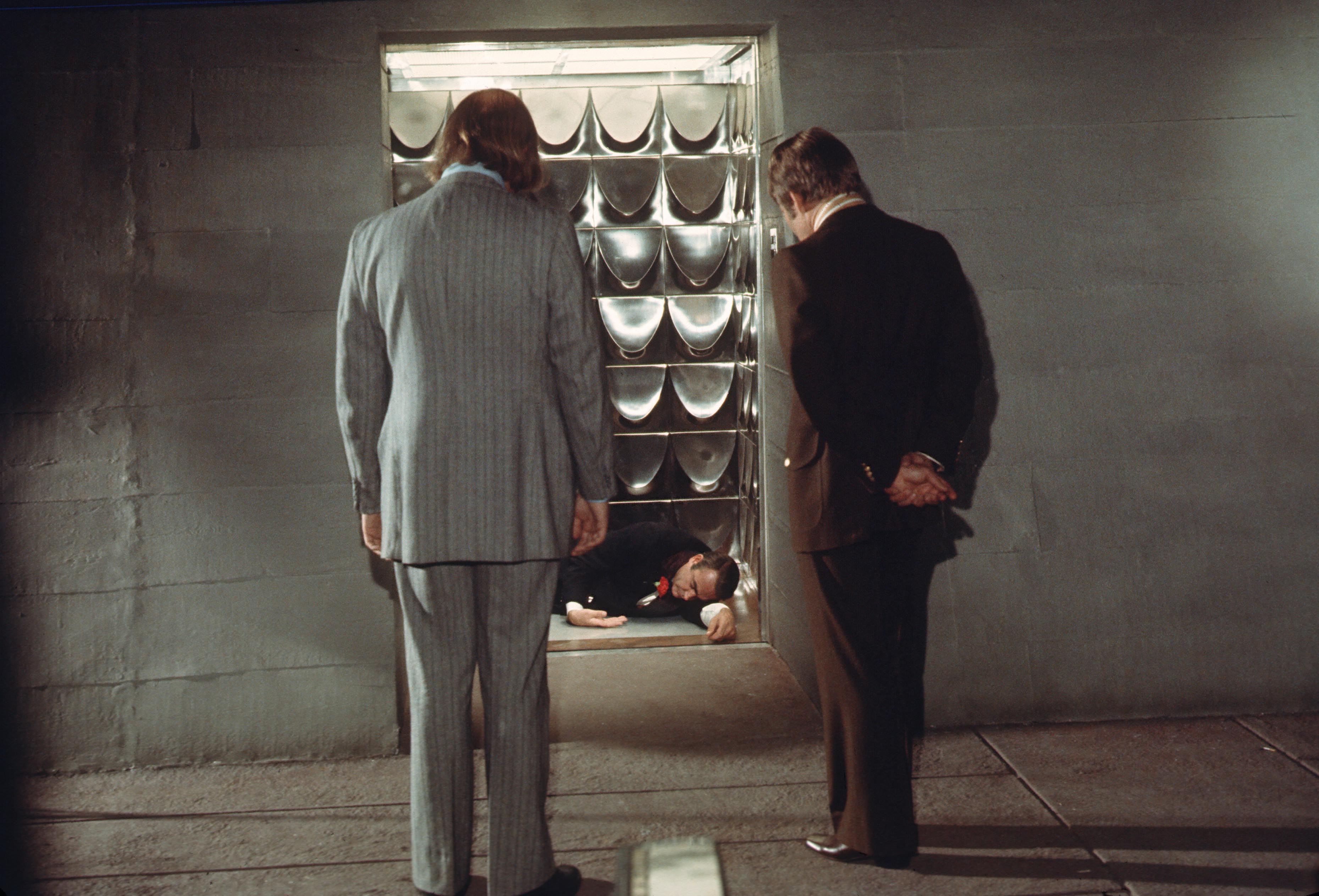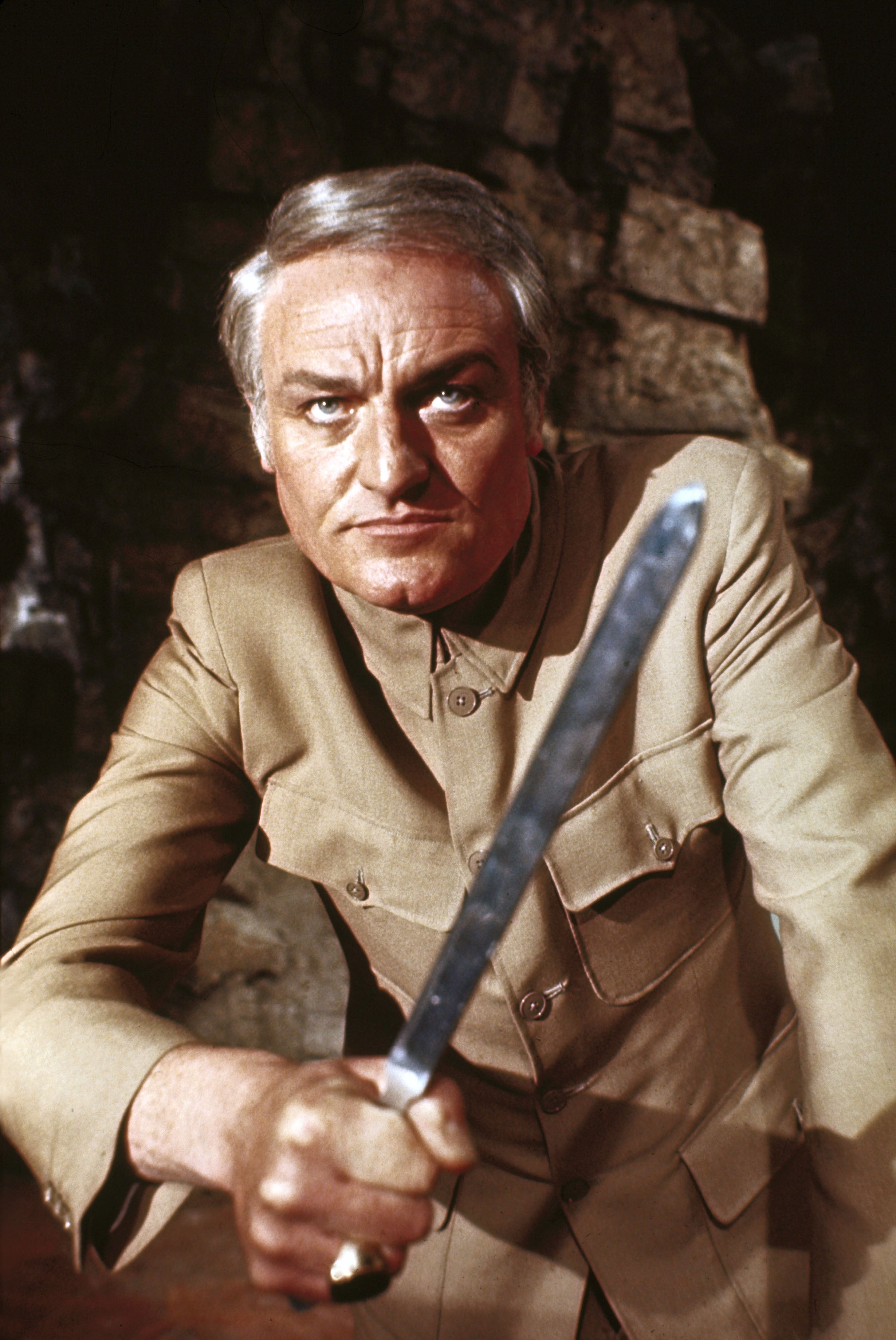‘I knew it was a courageous thing to do’: The curious story of Bond’s first gay villains
There’s been excitement about Q’s queer revelation in ‘No Time to Die’ but the franchise’s first gay characters appeared all the way back in 1971’s ‘Diamonds Are Forever’. Fifty years on, Adam Bloodworth talks to the actors who played Mr Wint and Mr Kidd about why they’re worth celebrating


Your support helps us to tell the story
From reproductive rights to climate change to Big Tech, The Independent is on the ground when the story is developing. Whether it's investigating the financials of Elon Musk's pro-Trump PAC or producing our latest documentary, 'The A Word', which shines a light on the American women fighting for reproductive rights, we know how important it is to parse out the facts from the messaging.
At such a critical moment in US history, we need reporters on the ground. Your donation allows us to keep sending journalists to speak to both sides of the story.
The Independent is trusted by Americans across the entire political spectrum. And unlike many other quality news outlets, we choose not to lock Americans out of our reporting and analysis with paywalls. We believe quality journalism should be available to everyone, paid for by those who can afford it.
Your support makes all the difference.No Time to Die will be remembered for cramming in two of the biggest revelations in the history of the James Bond franchise. This isn’t to give either of those away, but to divulge a third: that Bond’s handy gadget man, Q, is gay. “He’ll be here soon!” Ben Whishaw’s Q warns Bond, hurriedly chopping a cucumber ahead of his dinner date.
Q’s revelation was significant for queer fans who’ve long appreciated Bond’s high campness in and around all that brawny machismo. But there hasn’t been an overtly queer character in the franchise for 50 years – not since Diamonds Are Forever, released in December 1971.
Daniel Craig’s era will be rightly celebrated for being way more progressive than the franchise has ever been before, by properly exploring Bond’s emotions for one. But in terms of the representation of sexuality, 007 and his universe have maintained an unrealistically straight image. (Javier Bardem’s character Silva in Skyfall flirts outrageously, but still, nothing about his sexual preference was out in the open.)
All of which makes gay henchmen Mr Wint and Mr Kidd back in 1971’s Diamonds Are Forever, all the more remarkable. Together, they are responsible for some of the most sublime comic interludes in the whole of the Bond franchise. The two henchmen working for Blofield dispatch one-liners as sharp as their matching suits as they go about murdering people and trying to kill off Sean Connery.
They attempt to cremate Connery’s Bond in a funeral parlour, and in another scene, blow him up with a bomb disguised as a camp dessert dish. In another, they conduct a homicidal attack on a helicopter before walking off hand in hand into the sunset.
They’re just about the most interesting element of Diamonds Are Forever, which is remembered by many fans as Connery’s tired final turn in the tux. “Connery’s return is blighted by the rapid ageing that afflicted his career’s mid-section before the Eighties World’s Sexiest Pensioner resurrection,” a BBC critic uncharitably wrote in 2001. After George Lazenby’s one-off appearance in On Her Majesty’s Secret Service, producers Harry Saltzman and Albert R Broccoli paid a then record sum of $1.25m to coerce Connery back – but for many, the diamond smuggling plot lacked sparkle.
However, taking $19m at the US box office, Diamonds... became the fifth-highest grossing film Stateside that year, above Dirty Harry and A Clockwork Orange. It meant the film was radical for giving queer representation a mainstream platform. To give some context, in 1970, the year the film was shot,70 per cent of Americans thought homosexual relations were wrong, while the UK was only three years into decriminalisation.
Mr Wint and Mr Kidd were played by Bruce Glover and Putter Smith, two straight men, but even then they reportedly riled Connery. Glover, who is now 89, remembers the star being uncomfortable with homoerotic jokes during the shoot. “I was chest to chest with Sean,” he says. “I like to make jokes, so I said in a kinda wispy voice, ‘I think I’m getting emotionally involved…’”
Glover thought Connery would laugh but the tough Scotsman held a firm stare. “He didn’t know me, so he thought I was gay. I could see his little Scottish brain going, ‘Oh my God…’ I thought I should probably say, ‘Sean it was a joke…’ And then I thought, ‘Oh to hell with it, let him worry.’”

Watch Apple TV+ free for 7 days
New subscribers only. £8.99/mo. after free trial. Plan auto-renews until cancelled

Watch Apple TV+ free for 7 days
New subscribers only. £8.99/mo. after free trial. Plan auto-renews until cancelled
When Connery eventually discovered Glover was heterosexual, he recalls him “grinning at me, waving his finger. He walked over saying ‘you son of a bitch’ about three times...”

Some audiences were uncomfortable too. Smith, now 80, remembers the film being picketed in New York. “A hundred people got together with signs,” he recalls. Smith, a jazz musician who went into acting briefly for the role, experienced the hate firsthand. “A conductor once came to me and said, ‘You know, I boycotted you in New York.’ “I said, ‘Gee, I’m sorry, I didn’t write this shit…’”
In a way, it’s no wonder there was a backlash. Bond has always projected a traditionally heteronormative ideal, from his attitude towards women as playthings to coerce into bed on missions, to the way film posters presented him physically propped up by women on either side. Ian Fleming even said it himself: writing in 1953, he explained that Bond was the pursuit of “red-blooded heterosexuals”.
But it wasn’t a surprise that queers, in Diamonds Are Forever, were the enemies. Villains throughout cinema history have tended to reflect current “fears” and attitudes, and homosexuals have a long history of being vilified. It’s a topic writer Vito Russo explores in his seminal 1981 book The Celluloid Closet, which runs through onscreen queer stereotyping from the Sixties to the Eighties, from Dr Frank-N-Furter in The Rocky Horror Picture Show to Sharon Stone’s bisexual Catherine Tramell in Basic Instinct.
Glover and director Guy Hamilton were responsible for conceiving the characters for the screen and it feels as if they mined comedy in order to create gay characters suited to themselves and mainstream audiences of the time. “I didn’t want to be that kind of clichéd gay guy,” Glover recalls, thinking perhaps of the campness of Richard Burton and Rex Harrison’s gay barbershop couple in 1969’s Staircase. “I realised there was a great opportunity for humour all the way through this piece.”
The most immediately obvious joke is based around the looks of both men, who wouldn’t seem out of place on the cover of a music mag today and would have, in 1971, been considered beatnik types. “At the time I was looking hip,” remembers Smith of the audition period. “Long hair, glasses, it was just the look…”
“He’s hilarious, he’s fun to look at, he’s like a big giant toy,” Glover remembers of his co-star, down the phone from Los Angeles.
They weren’t the only characters in Diamonds… who were queer, either. Another example of the villainous queer trope, Blofeld – played by the actor Charles Gray – cross dresses and spends much of his screen time dropping sassy comments in Bond’s direction, exhibiting what one critic calls “wonderfully camp humour”.

These characters may have been written for laughs, but fast forward to 2021 and queering Bond is the serious side hustle of a whole online community. “For me growing up, Wint and Kidd represented some kind of ideal,” says David Lowbridge-Ellis, founder of the Licence to Queer blog, which publishes queer reviews of the Bond films, as well as features examining everything from Bond’s muscle mary status to how queer his hedonistic ways are. “They are, after all, a loving same-sex couple, something that is still little seen onscreen. In 1971, it was virtually non-existent. Yes, they’re hired assassins who think nothing of drowning little old ladies and offing Las Vegas entertainers in their dressing rooms but, well, nobody’s perfect.”
Lowbridge-Ellis is right: Wint and Kidd are far from perfect. For one, there’s barely any intimacy. Speaking of Smith, Glover says: “I looked at his mouth and his moustache and his goofy lips and I went, ‘There is no way I wanna kiss this guy.’” Smith, on the other hand, is more comfortable speaking about the value of the representation. “I knew it was a courageous thing to do, but I don’t feel like I was somebody who was fighting for civil rights. I just had this opportunity and took it.”
Lowbridge-Ellis goes so far as to points out that much about the characters is, actually, “undeniably homophobic”. From the way Mr Wint was dispatched with a bomb up his backside to the obvious fact that here were two straight men making marginalised gay men the butt of their jokes, it’s easy to argue how Wint and Kidd were exploiting the LGBT+ community rather than supporting it.
But by simply being onscreen, the duo had represented the gay community – and made a whole crowd including myself feel seen – whether their creators had intended to or not. Fifty years later, I know I’m not the only LGBT+ Bond fan quietly trembling when the assassins hold hands and walk off into the sunset. After Q’s recent coming out, we can only hope that a Bond film doesn’t wait another half century to be queered again. No Time to Die? No time like the present, more like.



Join our commenting forum
Join thought-provoking conversations, follow other Independent readers and see their replies
Comments